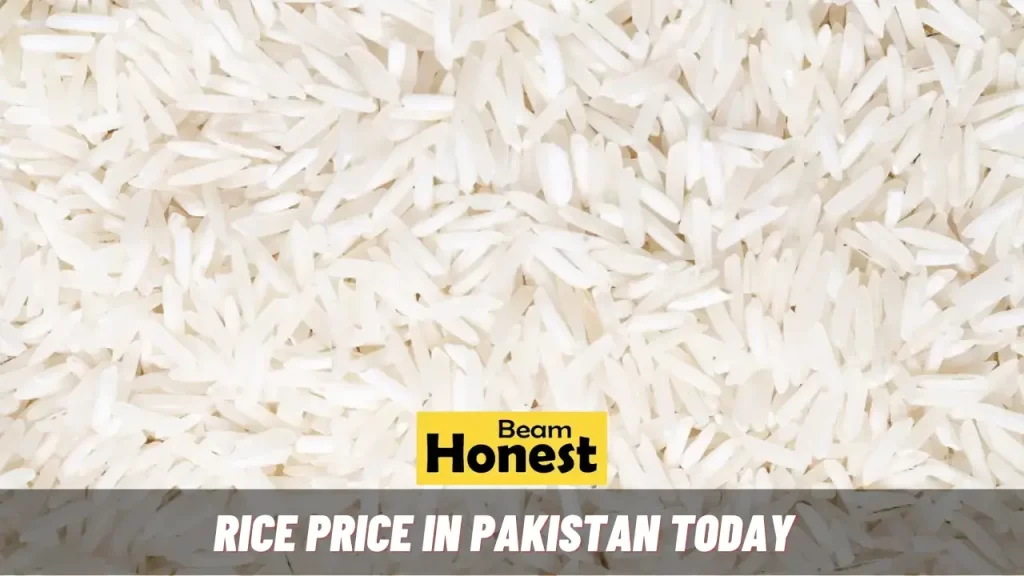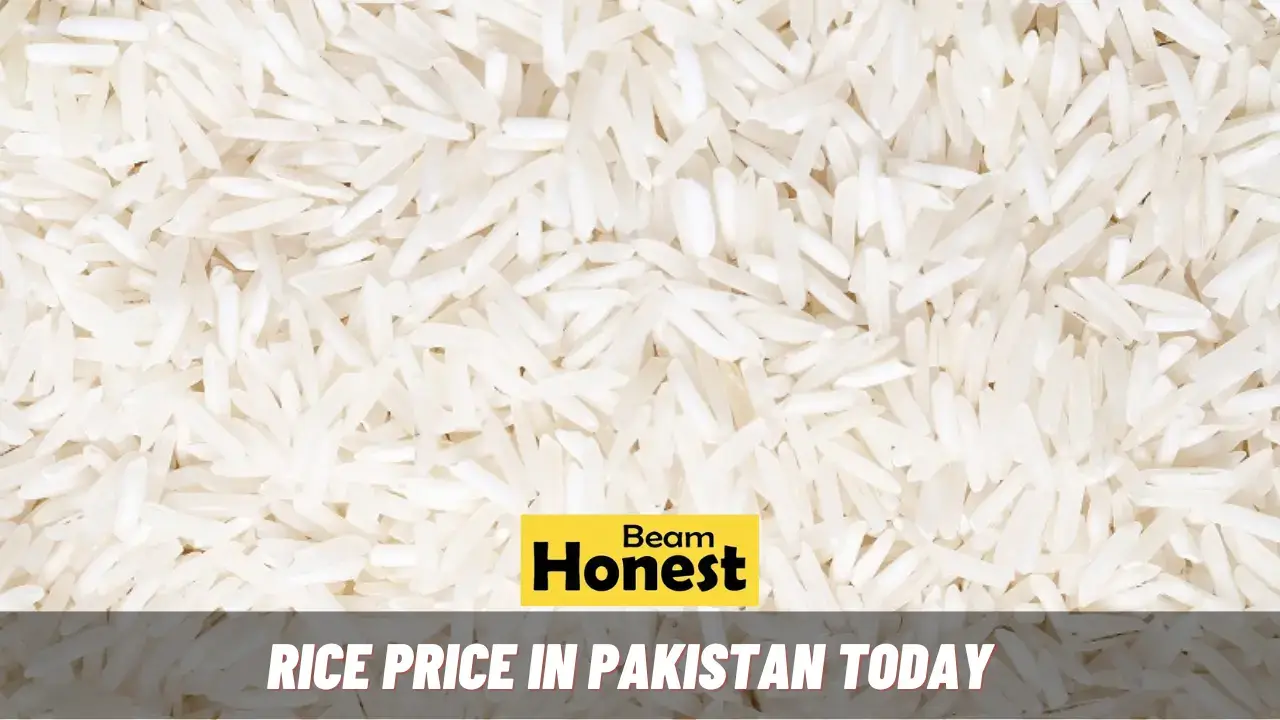What are the current Rice Prices in Pakistan Today, and how do they impact the agricultural sector and consumers? Rice, also known as “chawal,” is a vital food staple in Pakistan, with a significant impact on the economy and food security. Understanding the factors influencing the rice price in Pakistan is crucial for farmers, consumers, and policymakers. In this article, we will delve into the current trends of price fluctuations in Pakistan’s rice market. By analyzing the dynamics surrounding rice prices, we aim to gain valuable insights into the challenges and opportunities within the market.
Pakistan is one of the largest producers in the world, with Punjab and Sindh provinces being key contributors. Thanks to fertile land, favorable climate conditions, and an established irrigation system, Pakistan provides ideal conditions for rice cultivation. Producing various Basmati and non-Basmati varieties that cater to domestic as well as international markets.

Current Rice Price Trends in Pakistan
1 Kg Chawal Rate In Pakistan Today
Rice prices in Pakistan experience regular fluctuations due to various external influences. As of today, average prices range between Rs 350 and Rs. 450 per kilogram depending on variety and quality – though these numbers could change depending on market conditions or other external influences.
| Weight | Minimum Price | Maximum Price |
|---|---|---|
| 1 KG | Rs. 350 | Rs. 450 |
25 KG Rice Price in Pakistan
Rice is typically sold in large quantities such as 25KG bags for households with higher consumption needs. In Pakistan today, 25KG bags typically range between Rs. 5000 and Rs. 7800; however, prices may differ depending on factors like quality and variety of the rice purchased as well as processing methods employed and market demands that contribute to price variations.
| Weight | Minimum Price | Maximum Price |
|---|---|---|
| 25 KG | Rs. 5000 | Rs. 7800 |
40 KG Rice Price in Pakistan
Consumers looking for larger quantities of rice may prefer purchasing it in 40 kg bags. Prices typically range between Rs. 2700 and Rs. 6400 depending on their variety, market conditions, and regional variations; it is wise to check with retailers or wholesalers in your area to obtain accurate and up-to-date prices.
| Rice Brand Names | White | Sella | Steam |
|---|---|---|---|
| 1509 40 KG Bag Price | Rs. 4300 | Rs. 4900 | Rs. 5100 |
| 386 Basmati 40 KG Bag Price | Rs. 2850 | Rs. 3300 | Rs. 3600 |
| C 9 40 KG Bag Price | Rs. 2600 | Rs. 2800 | Rs. 3300 |
| Irri 6 40 KG Bag Price | Rs. 2350 | Rs. 2600 | Rs. 2800 |
| Kainat 1121 40 KG Bag Price | Rs. 5200 | Rs. 6000 | Rs. 6400 |
| Kainat 1121 B1 Broken 40 KG Bag Price | Rs. 2600 | Rs. 2800 | Rs. 3200 |
| Kainat 1121 B2 Broken 40 KG Bag Price | Rs. 2200 | Rs. 2400 | Rs. 2800 |
| Kainat 1121 Short Grain 40 KG Bag Price | Rs. 3200 | Rs. 3400 | Rs. 3600 |
| New Super Basmati 40 KG Bag Price | Rs. 4700 | Rs. 5000 | Rs. 5400 |
| Super B1 Broken 40 KG Bag Price | Rs. 2600 | Rs. 2750 | Rs. 3150 |
| Super B2 Broken 40 KG Bag Price | Rs. 2350 | Rs. 2450 | Rs. 2800 |
| Super Basmati Old 40 KG Bag Price | Rs. 4900 | Rs. 5300 | Rs. 6000 |
| Super Fine 40 KG Bag Price | Rs. 3000 | Rs. 3580 | Rs. 4000 |
| Super Kainat Rice Rate 25 KG Bag | Rs. 4200 | Rs. 4300 | Rs. 4600 |
| Super Short Grain 40 KG Bag Price | Rs. 3200 | Rs. 3400 | Rs. 3600 |
| Supri 40 KG Bag Price | Rs. 2700 | Rs. 2900 | Rs. 3000 |
50 Kg Rice Price in Pakistan
Bulk buyers or those requiring large quantities of rice often prefer purchasing it in 50KG bags, which typically range in price between Rs. 14999 and Rs. 16800 in Pakistan today. Keep in mind, however, that prices may differ depending on the region and type of grain purchased; market forces, such as supply and demand can also have an effect.
| Weight | Minimum Price | Maximum Price |
|---|---|---|
| 50 KG Rice | Rs. 14999 | Rs. 16800 |
Also Read:
Rice Prices Can Be Defined Based on Different Aspects
Climate and Weather Conditions
Rice cultivation depends heavily on weather conditions, particularly rainfall, and temperature. Any deviations from normal weather patterns – droughts or excess rainfall for example – can have detrimental impacts on yields and prices; unfavorable weather during sowing, growing, or harvesting seasons could reduce supply leading to higher prices overall.
Government Policies and Regulations
Government policies and regulations play a pivotal role in shaping rice/chawal prices, as measures such as subsidies, support prices, and import/export restrictions have an immediate effect on supply and demand dynamics in the rice market. Furthermore, any changes or interventions from the government could potentially have an immediate knock-on effect that further influences the prices of grain.
International Market Dynamics
Pakistan actively engages in the global rice trade as both an exporter and an importer. Fluctuating demand from major importers and changes in global rice prices can impact domestic rice prices in Pakistan. Currency exchange rates and trade agreements also influence the cost of imported rice, thereby affecting local prices.
Price Fluctuations Can Have Serious Consequences
Price fluctuations have an immense effect on Pakistani farmers. When profits increase with higher rice prices, unexpected price drops lead to reduced income and financial hardship for these hardworking individuals. Fluctuating prices make it more challenging for them to plan production effectively while managing finances effectively.
Rice is a staple food for most of Pakistan’s population and any significant fluctuations in price can directly impact consumer affordability and food security. Price increases can lead to increased food inflation, making it harder for lower-income households to afford an essential diet component. Price stability is critical in maintaining population well-being.
Government Initiatives to Stabilize Rice Prices
The Pakistani government recognizes the significance of stable rice prices for both farmers and consumers alike, so to mitigate price fluctuations they have taken various steps including offering subsidies directly to farmers, supporting agriculture research & development activities, and introducing market reforms that promote fair competition & transparency within the rice sector.
Rice exports play an essential part in Pakistani rice price dynamics. When there is strong international demand for Pakistani grains, exports increase, leading to less domestic supply and consequently higher domestic prices. Conversely, imports can help stabilize domestic production during periods when domestic output decreases significantly; import policies must therefore be managed carefully to meet both farmers’ interests as well as consumer ones in an economically viable way. The government carefully manages both export and import policies to provide economic benefits across sectors of society – whether farmers are protected, consumers benefit, and the economy at large.
Rice prices in Pakistan are influenced by climate conditions, government policies, global market trends, and consumer demand. To ensure price stability, Pakistan needs to focus on sustainable farming practices, invest in research and development, and establish effective risk management mechanisms. These measures will help mitigate sharp price fluctuations and their potential negative consequences.
Also Read:
Overall Conclusion
Numerous factors, such as weather patterns, government policies, and international market dynamics determine rice prices in Pakistan. Awareness of these influences is crucial for stakeholders involved in the rice sector such as farmers, consumers, and governments; maintaining price stability ensures support for farmers’ livelihoods while upholding consumer affordability and food security throughout Pakistan.
Frequently Asked Questions (FAQs)
The average price of rice in Pakistan today ranges from Rs. 350 to Rs. 450 per kilogram, depending on the variety and quality of rice.
Price fluctuations can impact rice farmers by affecting their income and financial stability. High prices can lead to increased profits, while sudden drops can result in financial difficulties.
Rice price changes directly impact consumer affordability and food security. High prices can lead to increased food inflation and make it challenging for low-income households to afford rice.
The government has implemented various measures, including subsidies to farmers, market reforms, and support for agriculture research and development, to stabilize rice prices.
Export and import policies play a crucial role in balancing domestic supply and demand. Increased exports can lead to higher prices, while imports can stabilize prices during periods of low production.

